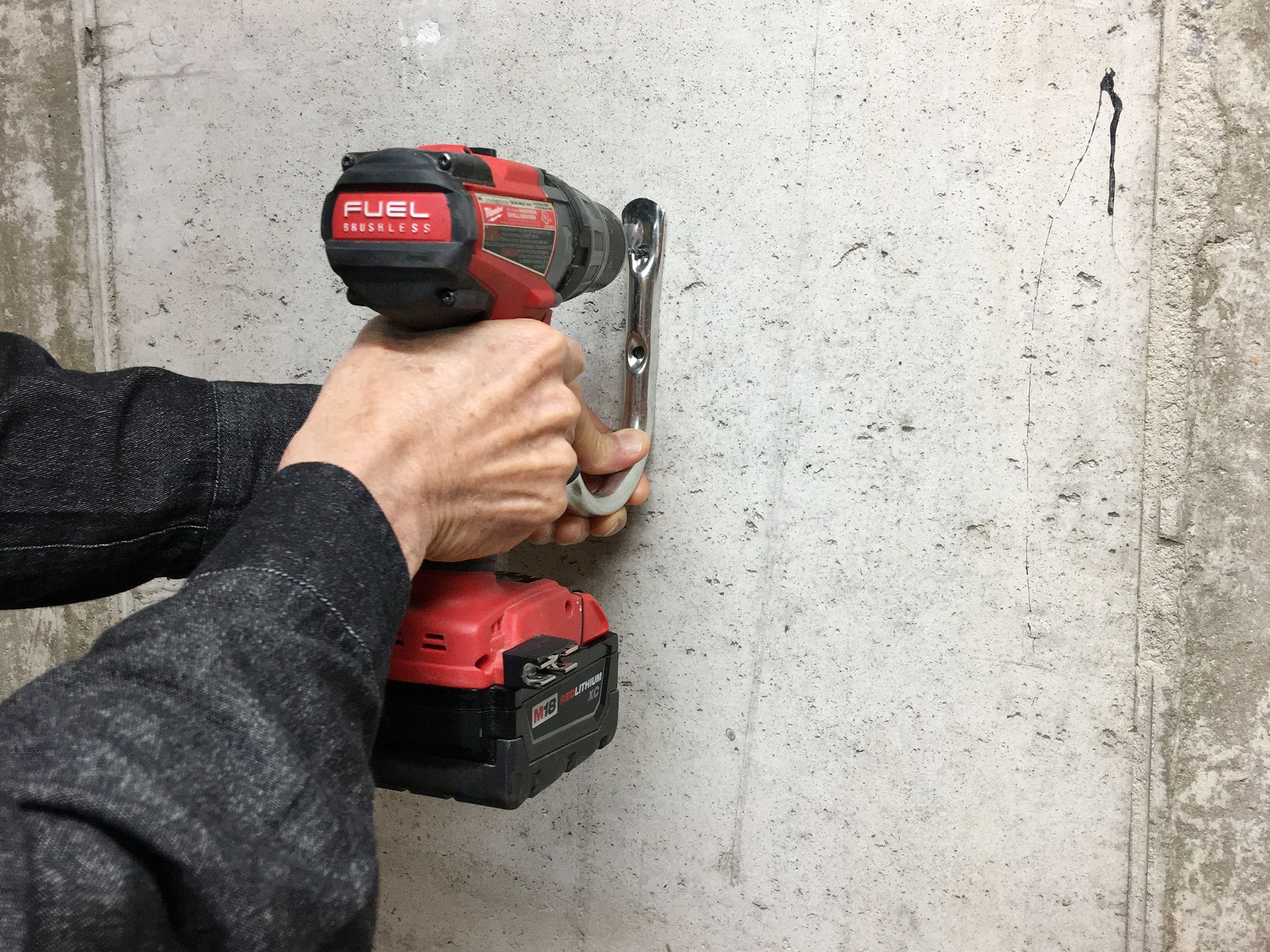Different finishing nail sizes cater to various woodworking and construction needs, offering versatility in securing trim, molding, and other finishing elements.
Ranging from thicker 15-gauge nails to finer 18-gauge options, these nails differ in thickness and strength, allowing craftsmen to choose based on the project’s requirements.
The selection of the right nail size plays a pivotal role in ensuring a secure and aesthetically pleasing finish, considering the material type, weight, and delicacy of the task at hand.
In this article, you will understand the different finishing nail sizes and their uses. Carefully read through!
Table of contents
Gauge and Measurement Explained
A gauge is a unit of measurement used to describe the thickness of wire and nails. The lower the gauge number, the thicker the wire or nail. For example, a 15-gauge wire is wider than a 16-gauge wire.
Here are some standard lengths and diameters for finishing nails:
1. 15-Gauge Finishing Nails
15-gauge finishing nails are typically used for trim, molding, and casing. They are available in lengths from 1-1/2 to 2-1/2 inches.
2. 16-Gauge Finishing Nails
16-gauge finishing nails are slightly smaller than 15-gauge nails. They are typically used for smaller trim pieces and cabinetry.
3. 18-Gauge Finishing Nails
18-gauge finishing nails are the smallest standard size of finishing nails. They are used for delicate work, such as attaching beadboard or crown molding.
4. Specialty Sizes: 23-gauge Micro Pin Nails
23-gauge micro pin nails are the most minor type of finishing nail. They are used for delicate work, such as attaching veneer or repairing wood furniture.
Here is a table summarising the common lengths and diameters for finishing nails:
| Gauge | Diameter (inches) | Typical Applications |
| 15 | 0.072 | Trim, molding, casing |
| 16 | 0.064 | Smaller trim pieces, cabinetry |
| 18 | 0.048 | Delicate work, beadboard, crown molding |
| 23 | 0.028 | Very light work, veneer repair |
Please note that these are just general guidelines. The best way to choose the right size finishing nail for your project is to consult a professional.
Read Also: How To Remove Contacts With Long Nails
Types of Metals for Nails
Nails are made from various metals, each with its properties and advantages. Here are some of the most common types of metals used for nails:
- Steel: Steel is the most common type of metal used for nails. It is strong, durable, and relatively inexpensive. Steel nails are available in various finishes, including galvanised, zinc-plated, and stainless steel.
- Stainless steel: Stainless steel nails are more corrosion-resistant than steel nails. They are a good choice for outdoor applications or applications where the nails will be exposed to moisture. Stainless steel nails are also slightly more robust than steel nails.
- Aluminum: Aluminum nails are lightweight and corrosion-resistant. They are a good choice for applications where weight is a concern, such as aircraft construction. Aluminum nails are not as strong as steel nails but are still strong enough for many applications.
- Copper: Copper nails are very corrosion-resistant and conductive. They are a good choice for electrical applications. Copper nails are also soft and easy to work with.
- Brass: Brass nails are decorative and corrosion-resistant. They are a good choice for applications where appearance is essential. Brass nails are less strong than steel nails but are strong enough for many applications.
- Bronze: Bronze nails are strong, corrosion-resistant, and decorative. They are a good choice for applications where strength, corrosion resistance, and appearance are essential. Bronze nails are more expensive than steel nails, but they are worth the extra cost for some applications.
In addition to the metals listed above, several other speciality metals are used for nails. These metals include titanium, nickel, and molybdenum.
Speciality metals are typically used for applications requiring high strength, corrosion resistance, or other unique properties.
Read Also: How To Remove Acrylic Nails With Hot Water
What are the Types of Finishing Nails?
Finishing nails are a versatile nail type often used in woodworking and construction projects. They are typically used to combine pieces of wood in a strong and aesthetically pleasing way.
Here are some of the most common uses for finishing nails:
- Attaching trim and molding: Finishing nails are ideal for securing trim and molding to walls, doors, and other surfaces. They are small and inconspicuous, so they are distinct from the look of the finished project.
- Joining wood pieces: Finishing nails can also join wood pieces together firmly and permanently. They are often used to assemble furniture, cabinets, and other woodworking projects.
- Reupholstering furniture: Finishing nails are often used to secure upholstery fabric to furniture frames. They are small and robust, so they do not damage the fabric.
- Repairing wood items: Finishing nails can also be used to repair tiny cracks and holes in wood items. They are a quick and easy way to fix minor damage.
- Attaching veneer: Finishing nails are sometimes used to adhere veneer to wood surfaces. They are small and robust, so they do not damage the veneer.
Here are some additional benefits of using finishing nails:
- Quiet: Finishing nails are quieter than other nails, such as framing nails. This is because they do not have a sharp point that can damage the wood.
- Easy to drive: Finishing nails are easy to operate with a hammer or nail gun.
- Affordable: Finishing nails are relatively inexpensive, making them a cost-effective option for many projects.
Read Also: How To Remove Gel X Nails
Factors to Consider When Choosing a type of Finishing Nails?
Overall, finishing nails are a versatile and valuable type of nail that can be used for various woodworking and construction applications.
When choosing a type of finishing nail, there are a few factors to consider, including:
- Gauge: Gauge is a unit of measurement used to describe the thickness of wire and nails. The lower the gauge number, the thicker the wire or nail. The most common gauges for finishing nails are 15, 16, 18, and 23.
- Length: The length of the finishing nail will depend on the thickness of the workpieces you are joining.
- Finish: Finishing nails are available in various finishes, including galvanized, zinc-plated, and stainless steel. Galvanized nails are suitable for outdoor applications, while zinc-plated nails are good for indoor applications.
- Head style: Finishing nails are available with various head styles, including flat, countersunk, and brad. Flat head nails are the most common type, designed to flush with the wood’s surface.
- Material: Finishing nails are typically made from steel, but they can also be made from other metals, such as aluminium, copper, and brass. The material of the nail will depend on the application.
Here is a table summarising the factors to consider when choosing a finishing nail:
| Factor | Description |
| Gauge | Thickness of the nail |
| Length | Thickness of the workpieces you are joining |
| Finish | Corrosion resistance and appearance |
| Head Style | Appearance and application |
| Material | Strength and corrosion resistance |
Tips for Choosing and Using the Right Nails
Choosing the proper nails for your project is essential for a strong and secure job. Here are some tips for choosing and using the right nails:
1. Consider the type of wood you are working with.
Different types of wood have other properties, so you must choose nails compatible with the wood you are using. For example, hardwood nails are more complex and robust than softwood nails, making them a better choice for hardwood lumber.
2. Choose the right nail length.
The nail should be long enough to penetrate both pieces of wood you are joining but not so long that it protrudes through the other side. A good rule of thumb is to choose a nail twice the thickness of the thinner piece of wood.
3. Choose a suitable nail diameter.
The diameter of the nail should be thick enough to provide adequate strength but not so vast that it splits the wood. A good rule of thumb is to choose a nail with a diameter of about 1/4 inch for every inch of wood thickness.
4. Choose the right nail head style.
The head style of the nail should be appropriate for the application. For example, flat headnails are the most common type for general applications. Countersunk nails are designed to be below the surface of the wood, while brad nails are small and have a decorative head.
5. Choose the right nail finish.
The finish of the nail should be appropriate for the application. For example, galvanised nails are good for outdoor applications, while zinc-plated nails are good for indoor applications. Stainless steel nails are the most corrosion-resistant option but also the most expensive.
6. Pre-drill holes for hardwood.
Pre-drilling holes to prevent the wood from splitting is suitable for working with hardwood. The hole should be slightly smaller than the diameter of the nail.
7. Use a hammer that is the right size for the nail.
The hammer should be heavy enough to drive the nail into the wood but not so heavy that it damages the wood.
Read Also: How To Remove Polygel Nails
FAQs
Finishing and brad nails are small, thin nails used for woodworking projects. However, there are some key differences between the two. Finishing nails typically have a flat head designed to be flush with the surface of the wood, while brad nails have a small, decorative authority. Finishing nails are also typically slightly more extended than brad nails.
The best gauge for finishing nails will depend on the specific application. For general use, 15-gauge finishing nails are a good choice. For smaller trim pieces or cabinetry, 16-gauge finishing nails may be a better option.
The length of the finishing nail you choose will depend on the thickness of the workpieces you are joining. Generally, the nail should be twice the thickness of the thinner workpiece. For example, if you are joining two pieces of 1/2-inch thick wood, you would use a 1-inch finishing nail.
Conclusion
Understanding the diverse sizes of finishing nails is pivotal for anyone involved in carpentry or construction projects. From the nuanced differences in gauges to the varying lengths and applications, these nails offer a spectrum of choices to suit specific needs.
The selection of the right nail size isn’t merely a matter of preference but a crucial decision influenced by the project’s requirements, material compatibility, and aesthetic considerations. Each size has strengths and weaknesses, making it essential to match the nail to the task.
Additionally, nail manufacturing technology advancements and eco-friendly options underscore the evolving landscape of finishing nails, offering more sustainable choices without compromising quality.





